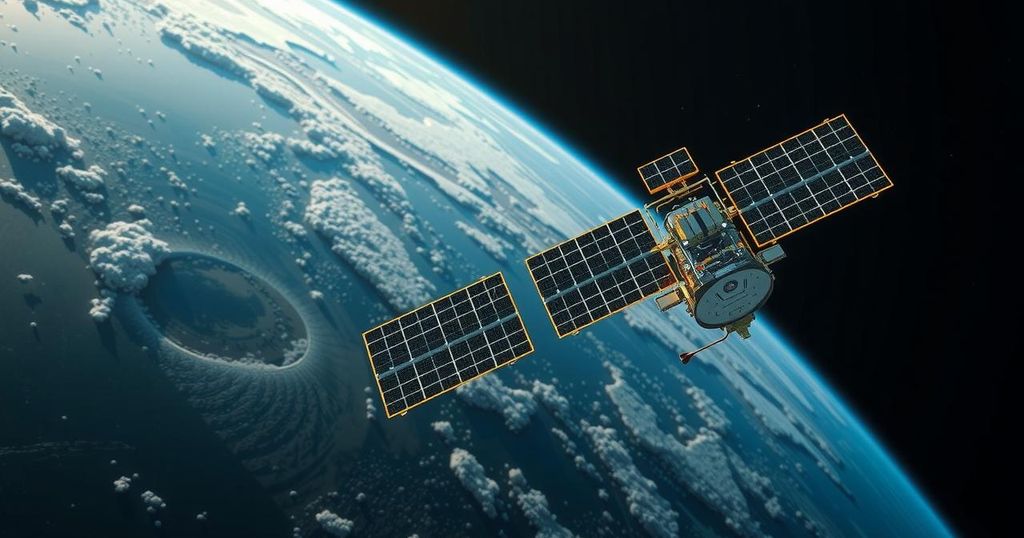The GOES program, a collaboration between NOAA and NASA, utilizes advanced satellites to enhance weather monitoring and forecasting, demonstrated by their critical role in tracking hurricanes. With the ongoing development of the GOES-R series and the upcoming GeoXO satellites, these systems are essential for providing lifesaving data to the public and ensuring effective disaster preparedness.
The National Oceanic and Atmospheric Administration (NOAA) has increasingly relied on the Geostationary Operational Environmental Satellites (GOES) to monitor and forecast weather phenomena, exemplified by recent hurricanes Helene and Milton. These advanced satellites provide timely data essential to weather predictions and disaster preparedness. The GOES program, a partnership between NOAA and NASA, enables continuous monitoring of vast portions of the Earth from geostationary orbit, significantly enhancing the ability to predict severe weather events. With the GOES-R series, the current generation of satellites represents the pinnacle of U.S. weather monitoring technology, safeguarding over one billion individuals across the Americas. The Aerospace Corporation has played a crucial role in supporting the GOES-R program, delivering technical expertise and assistance throughout various phases of the mission lifecycle, ensuring effective operational transitions and systems engineering support. The program’s historical significance is notable; the capabilities of satellite technology have transformed weather forecasting and disaster response since the first GOES satellite was launched in 1975. This progress is particularly poignant when reflecting on past tragedies, such as the 1900 Galveston Hurricane, where advanced prediction tools were nonexistent. Peter Phillips from Aerospace underscored the critical nature of timely information, stating the GOES satellites serve as crucial tools for providing warnings that can save lives and protect property. The latest additions to the GOES fleet include the recently launched GOES-19, which enhances Earth observation with advanced imaging technology, promising detailed insights into atmospheric and oceanic conditions. Furthermore, the GOES program encompasses a robust ground system to efficiently process and disseminate the integral data collected by these satellites, thereby making it accessible to a myriad of users worldwide. As the final satellite of the GOES-R series has been deployed, NOAA is transitioning toward the development of the next weather satellite constellation—named GeoXO—expected to launch in the early 2030s, which will build upon the successes of the current series. The ongoing assessment of the economic impact of such satellite systems underscores their immense value, both in monetary terms and their invaluable role in safeguarding public welfare. The collaboration between NOAA, NASA, and industry partners like the Aerospace Corporation not only supports current operational satellites but also sets the foundation for future advancements in meteorological science, continuously enhancing capabilities to address emerging environmental challenges.
The article focuses on the critical role of the Geostationary Operational Environmental Satellites (GOES) in weather monitoring and forecasting. The GOES program, initiated by NOAA and NASA, has evolved since its inception in 1975, significantly advancing the predictive capabilities for severe weather phenomena such as hurricanes. As natural disasters have become more severe, the necessity for reliable data and imaging from these satellites has intensified, emphasizing the lifesaving potential of timely warnings and preparedness.
In summary, the GOES program exemplifies the profound impact of satellite technology on weather monitoring and lifesaving forecasts. The collaboration between NOAA, NASA, and the Aerospace Corporation highlights the importance of advanced weather satellites in protecting lives and properties. As we look forward to the next generation of satellites in the GeoXO program, the foundational work laid by ongoing efforts promises to address future environmental challenges and enhance weather prediction capabilities significantly.
Original Source: aerospace.org






